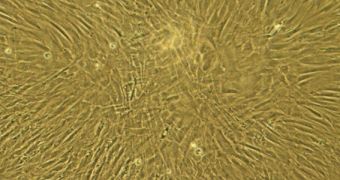When the next private, unmanned resupply spacecraft launches for the International Space Station (ISS), it will carry with it an advanced biomedical experiment that will shed more light on how exposure to microgravity and increased amounts of radiation can damage cells.
This question is very important for space exploration, especially when it comes to planning long-term missions to near-Earth asteroids, the Moon, and Mars. What the Curiosity rover has shown on its way to the Red Planet is that deep space is filled with more harmful radiations than experts first thought.
This means that any crew taking the one-and-a-half-year roundtrip to Mars will be exposed to a lot more radiations than deemed safe for the human body. The purpose of the MicroRNA Expression Profiles in Cultured Human Fibroblast in Space, or Micro-7, experiment will be to investigate just how cells respond to radioactivity in microgravity conditions.
Studies conducted on astronauts returning from 6-month stays aboard the ISS have revealed that spending time in low-gravity conditions can lead to bone and muscle mass loss, cellular damage, and other negative side-effects. However, the effects of radiations on human tissues have not been studied live due to obvious reasons.
The Micro-7 experiment will circumvent this hurdle by sending various types of human cells into space in a controlled environment. The effects of radiation exposure will be mimicked through the administration of the chemotherapy drug bleomycin, which damages the DNA material inside cells.
“When a cell in the human body is exposed to radiation, DNA will be broken and repaired, which is considered the initiation stage of tumor development,” explains Honglu Wu, PhD, the principal investigator for the experiment.
“Cells damaged from radiation exposure in space also experience microgravity, which we know changes gene expressions even without radiation exposure,” adds the expert, who holds an appointment with the NASA Johnson Space Center in Houston, Texas.
The experiment will be delivered to the ISS aboard a Dragon capsule developed by Hawthorne, California-based Space Exploration Technologies Corporation (SpaceX). The spacecraft will be ferried into low-Earth orbit aboard a SpaceX Falcon 9 medium-lift delivery system.
The mission is currently scheduled for takeoff on March 16, 2014, from the Cape Canaveral Air Force Station, in Florida. This will be SpaceX's third resupply mission to the ISS. The company is operating these flights under a Commercial Orbital Transportation Services (COTS) contract with NASA.
“If we learn more about how cells repair DNA damage more efficiently or less efficiently in space, that knowledge also will be helpful for cancer radiotherapy or treatment with radiation,” Wu expalins.
“A challenge in medical treatment is that certain tumors are highly resistant to radiation. But there could be various ways to make them more radiosensitive, or less resistant to radiation. That would help provide more effective treatment,” he concludes.

 14 DAY TRIAL //
14 DAY TRIAL //